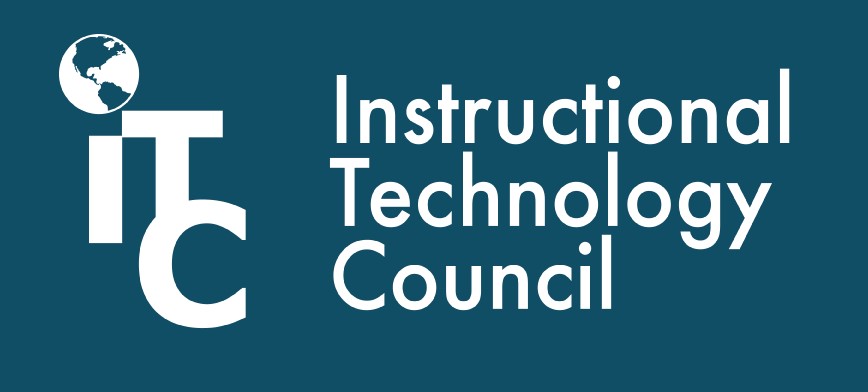Editor’s note: This article is provided by the Instructional Technology Council, an affiliated council of the American Association of Community Colleges.

Campuses are busily preparing for the fall term and the hoped-for return to “normal.” The pandemic came upon us quite unexpectedly. In March 2020, many of us shifted to virtual learning overnight with the assumption we would be back to campus in a few weeks.
More than 16 months later, we are facing the near-future with trepidation. After all, mask mandates are being re-imposed with the rapid spread of the Delta variant. Our fingers are crossed as we prepare for the return to in-person classes.
As the pandemic dust begins to settle, it is the perfect time to take stock of the pandemic’s impact on higher education and to frame the next steps for our community colleges.
Our successes during the pandemic
- Already teaching online classes. Before the pandemic, the average community college had at least 25% of its instruction online, while most universities had a fraction of classes online. For community colleges, the sudden migration to virtual learning was easier. More of our faculty and students had direct exposure to online instruction.
- An established online learning infrastructure. In addition, community colleges had LMS licensing capacity and effective professional development training in place. This was a critical advantage that provided a stable platform for the massive expansion of online learning.
Our challenges
Community colleges faced several significant challenges in the pivot to online learning including:
- Access. Many of our students did not have Internet service and/or lacked a decent device. As a result, during the pandemic we knew many students were sitting in a car near a free wi-fi solution. And they were using their smart phones to do coursework and submit assignments. Surprisingly, there was a similar problem for both full- and part-time faculty. Many had inadequate Internet service (for instruction) and attempted to use archaic at-home computers.
- Overwhelmed distance learning staff. The Annual ITC National Distance Learning Survey has tracked staffing for programs for the past five years. The typical distance learning program has one staff member. No one’s program was ready to be responsible for more than 90% of instruction.
- Many part-time faculty had not taught online classes. This turned out to be the heavy lift for most distance learning programs. Part-time faculty have been teaching an increasing percentage of the traditional courses as full-time faculty have shifted to online class schedules. As a result, most of our part-time colleagues had little or no training. Often, they were given content by full-time colleagues, but they were at a significant disadvantage in dealing with the pedagogy of online learning.
- Student services were not adaptive to the new realities of virtual learning. As academic instruction pivoted to online instruction, most student service remained an 8-5, M-F operation.
Additional reading: A recent ITC article noted that “just nine percent of the colleges who responded to a poll indicated that they had a plan to use technology for instructional continuity in the event of a pandemic. Yet, despite this, most colleges managed to pivot to emergency remote teaching and heavily leveraged instructional technology to do so. The article featured five stories about how their program/campus rose to the occasion during the pandemic.
Lessons learned: Next steps
Unfortunately, many campuses seem to be falling back into old habits in the post-pandemic world. Over the past year, many distance learning experts predicted that online learning would be more popular on the other side of the pandemic with both students and faculty, but some campuses have been dismantling most of the gains of online learning to recreate a more traditional class schedule.
The recommended pathway for colleges in a post-pandemic world requires recognition of a new reality and the need to embrace the following:
- Community colleges should support the new reality of the post-pandemic world. Colleges will offer even more online sections. Based on the pandemic’s impact and enrollment trends tracked in the ITC annual survey, the typical community college can anticipate up to 75% of its enrollments being online within the next 10 years.
- Going forward, colleges will deal with more (not less) disruptions to instruction. There will be additional pandemics, natural disasters and other unexpected events. There is a need to prepare for this reality by expanding strategic planning and disaster recovery plans to include distance learning.
- Access issues for wi-fi and devices must be addressed for both students and faculty.
- Faculty training programs for online learning should be expanded and made mandatory for both full- and part-time faculty. The current national standard initially is a minimum of eight hours of training and annual refresher/update training as well. Learning management system (LMS) training and the pedagogical differences of teaching an online class should be included in the faculty evaluation.
- Every traditional course needs assisted-web support. This will ensure exposure and usage of the LMS for faculty and students. It also will help find ways to use the LMS for other functions (such as student evaluations for all classes and various student services applications) to expand student and staff exposure to the LMS.
- College distance learning programs should launch initiatives, assistance and training in support of quality course design, accessibility, agreed-to standards for instruction, student success/retention strategies and practices, equity/inclusion and OER. Collectively, this effort will raise the bar and enhance student success in online instruction.
- The concept of a “live web” online course continues to be somewhat counter-intuitive. It conflicts with the changing schedule demands of the typical community college student, but it may have longer-term value for the hands-on classes that have so far generally avoided virtualization of instruction.
- Expanding student services to include virtualized student support as well as a broader service window (including evenings and weekends) will benefit both online students and active adult learners.
- Colleges should also conduct a review of their current online programs to become more aware of the specific tasks and challenges. Institutions should then appropriately fund and staff the program to manage the expanded role in institutional disaster recovery.
Implementation of an institutionalized commitment to online learning ensures a high level of disaster recovery (or, if you prefer, the ability to pivot) going forward.
An opportunity for more
Community colleges are to be commended for providing a high level of learning quality and student success under difficult circumstances. There is now an opportunity to build on the success of expanded online learning during the pandemic, since all faculty and students have been introduced to virtual learning.
Again, this will not be the last major disruption to our campuses. Many states are dealing with institution consolidations and closures. The current business model for higher education does not work well in the 21st century. In this climate of uncertainty, online learning is the stabilizing element – it offers reliable enrollment growth, can better manage costs, increases access and provides the best educational fit for both traditional and nontraditional students.





